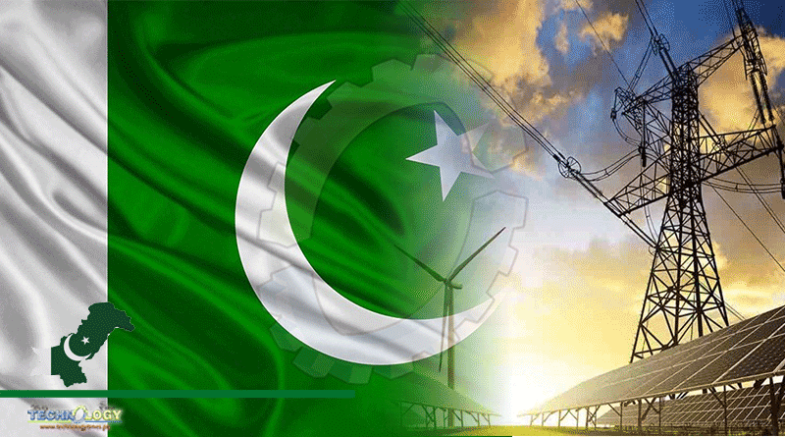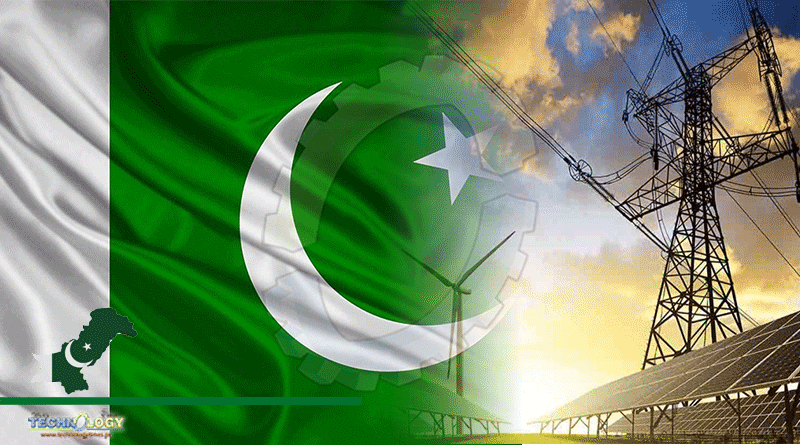The tale of Pakistan’s power sector is a series of policy choices and missteps by successive governments over the last 30 years or so.

The tale of Pakistan’s power sector is a well-documented series of policy choices and missteps by successive governments over the last 30 years or so.
On the positive side, we do now have a reasonably diversified energy mix (wind, solar, local coal, imported gas, etc) and a significant stake in this space by local as well as foreign private sector financiers and operators. However, the unaffordable cost of electricity generation, the continued leakages in the last mile distribution sector and the resultant suppressed demand and circular debt build-up have made this critical pillar of our economy financially unsustainable.
The recent signing of MOUs with about 50 Independent Power Producers (IPPs) is an important step towards reducing the end consumer tariff, and both sides are committed to taking this initiative across the finish line in the next few weeks. Along with the government-owned power plants, and those that came under the 2015 policy (including the CPEC power and Thar coal mining projects), the expected savings potentially do move the needle in the medium to long term, especially on account of avoided currency devaluation-related tariff increases. Whilst no government wishes to renegotiate signed contracts, the harsh reality is that our economy simply cannot afford to pay circa 30% dollar-indexed annual return on equity, especially on the more recent power projects that, in hindsight, could and should have been priced less generously. We would also be requesting the project finance lenders to extend the maturity of their debt beyond the typical 10 to 12-year tenor to smoothen the “front loaded” profile of the tariffs and provide consequential relief to the rate payers. Pakistan should always remain a welcoming investment destination, but the key lesson learnt is that all counterparties to such long-term contractual relationships must also consider, as a key variable, the financial sustainability, or otherwise, the eco-system.
We also now need to decisively move away from the single-buyer, sovereign-guaranteed, take-or-pay contractual structure that has unfortunately promoted the rent-seeking culture that many assume to be the only option on the table. On the contrary, there should be different pockets of private capital that will be willing to take a long-term market view on the overall demand/supply dynamics in the Pakistan’s Power Sector, without the need for a state backstop on volume or price. To achieve this long overdue objective, the government and the regulator have recently approved an 18-month road map to set up a wholesale commodity exchange that will allow multiple buyers and sellers to trade electricity, including under a take-and-pay regime, that should help reduce the consumer tariff, improve service and share the federal government’s financial burden with private sector participants. A carefully formulated wheeling regime, under final consideration by the regulator, should also facilitate private business-to-business flow of electricity to increase overall economic output as the “big picture” policy outcome whilst also providing a reasonable level-playing field to the incumbent intermediaries to recover their legitimate stranded, cross subsidy and other such costs.
The recent GOP announcement to provide 25% to 50% tariff relief to various categories of industrial customers for their incremental power consumption, and elimination of the distinction between peak and non-peak rates, is designed to increase power demand, economic output and employment opportunities, particularly in the small and medium enterprise sector. We all know that our industrial tariffs are amongst the highest in the region (on average 25% higher than those in our neighboring countries) that has resulted in gradual de-industrialization over the years as evidenced by the sub-optimal (less than 1) correlation between electricity consumption and GDP growth rate in Pakistan over the last 10 years. This pricing signal (alongside an imminently similar one for indigenous natural gas) should also incentivize a significant proportion of those approximately 5000 MW of captive power consumers to switch back to the national grid as their primary source of input power. In formulating this 3-year industrial tariff relief policy, against the backdrop of ongoing IMF discussions, the government rightly and boldly opted for a measured stimulus package that should more than pay for itself over the coming months.
Much has been said and written about reforming the power distribution companies. Outright privatization is perhaps not a feasible policy option in the near term, but a public-private partnership arrangement amongst the federal government, the respective provincial government and a private sector operator should be the interim way forward. The last mile power distribution and retail segment is a “local business” that cannot and must not be centrally handled from Islamabad if we are to achieve a truly sustainable and much-needed turnaround in this space. An incentive-based 5-year management contract proposition, along with freedom to implement a mutually-agreed business and value creation plan, and real skin in the game for the provinces, is being fleshed out with various stakeholders. This will coincide with the loss of monopoly and retail supply exclusivity for power distribution companies throughout Pakistan over the next 3 years or so. As with the wholesale trading platform referred to earlier, giving “consumer choice” is a very welcome step in the right direction as we saw in the telecommunication sector post its liberalization. As a policy matter, we should now be rewarding efficiencies, and vice versa, by doing away with the uniform pricing of electricity across Pakistan. For instance, if the Islamabad Electricity Supply Company (IESCO) has the lowest transmission and distribution loss of 8.65%, there is no reason why its consumers be charged a national T&D average of 15.53% to compensate the inefficiencies of other DISCOs in the country. Let the best performing company charge the lowest distribution tariff to its consumers and let the provinces choose to subsidize from their coffers if they wish to maintain a certain rate. Moreover, the distribution companies now need to work harder to zero in on the actual defaulters and thieves, through readily available technological and administrative solutions, without forever resorting to “collective punishment” in the name of revenue-based load-shedding regime on high loss feeders.
A holistic and long-term generation capacity rollout plan (on a least cost principle), including retirement of some of the older inefficient government and privately-owned plants, an associated transmission and distribution infrastructure augmentation plan, and a host of other demand and supply input variables, is in the process of being fine-tuned, arguably for the first time as an integrated planning tool for policy makers. Given the big difference in peak power demand between the summer and winter periods, we do need to now move to a take-and-pay regime, or some hybrid form of it, to reduce the financial burden on the state. Furthermore, there is now a realization that the scheduled financial close and commercial operation dates of various upcoming power projects in the pipeline may need to be pushed back to more closely align with their optimal usage and actual need of the economy. Simply put, and notwithstanding the contractual understanding, the pragmatic business and common sense need to prevail on all sides to prevent further instances of idle and un-productive generation capacity that we just cannot afford to pay for. We would also need to resist the international pressure to curtail our local coal expansion plan to fuel our future “base load” power generation needs even as the cost of “variable” renewable energy sources (such as wind, solar, and run-of-river hydro) continues to decline. With different caps, they complement each other and should not be viewed as mutually exclusive.
Another key issue that has bedeviled the Pakistan’s Power Sector for a long time is the need for “targeted subsidies”. Just to put this in perspective, 93% of all domestic consumers receive some form of subsidies. The top 25% of these consumers receive 36% of the total amount, however, the bottom 25% (where the need for financial support is the greatest) receive only 10%. The total annual subsidy amount in the Pakistan’s Power Sector is roughly Rs 450 billion out of which Rs 250 billion fall under the “cross subsidy” category (essentially the industrial and commercial customers subsidizing the domestic and agricultural ones) and the remaining Rs 200 billion bill is footed by the Ministry of Finance. There is also an inter-DISCO subsidy referred to above, as well as what the state budgets for under special incentive schemes from time to time such as the fixed and subsidized rate of electricity (and gas) provided to the export-oriented industries. The state should be subsidizing only those people and areas that are the most deserving and ideally through direct cash transfers. In this regard, a pilot project mapping the IESCO billing with the corresponding Ehsaas database is in progress.
Last but not the least, we need to develop a clear and innovative road map to arrest the continuing increase in the power sector’s circular debt “stock” that currently stands at around Rs 2.3 trillion. Simply passing through the periodic increase in cost of service to end consumers, under an automatic input-output calculator model, is indeed what the “IMF Book” rightly prescribes but our prevailing socio-economic circumstances, not helped by the Covid-19 pandemic, and the fact that our electricity tariffs are already too high, do not always allow this medicine to be swallowed in the ordinary course of business. In fact, it would have been much “better” for us to come under the same policy pressure from our multilateral friends to figure out ways and means to instead reduce the tariff to make it more affordable! All of the various demand, supply and cost management initiatives alluded to in this paper, backed by a granular set of action items, are indeed meant to reduce the circular debt “flow” to an acceptable level within the next 3 years.
The prime minister is determined to fix Pakistan’s power sector on a long-term sustainable basis. Maintaining, or mere tinkering with, the status quo is not an option anymore. His team needs to deliver various out of box solutions to achieve this critical national objective. Time is of the essence.
Originally published at The News
